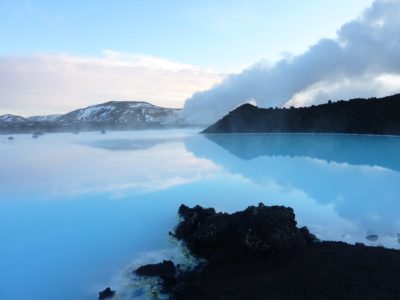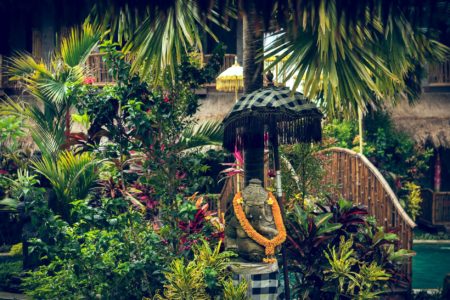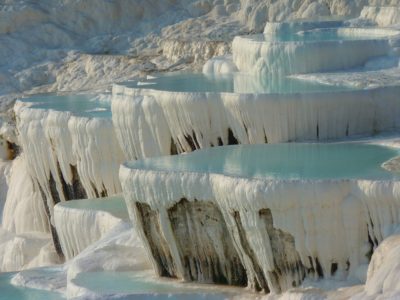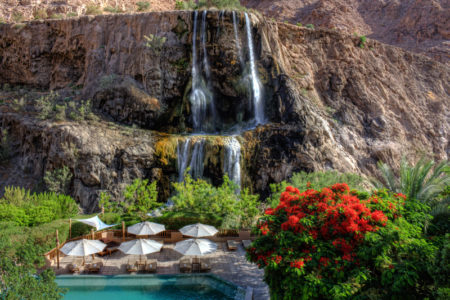Nature reminds us daily how diminutive we are, and the world’s best hot springs are just one of its majestic features.
Some hot springs stand alone, while others are connected to spas, which offer a range of services to visitors. Not all of them are safe for wading, but they’ll look great in pictures on your social media.
The Blue Lagoon of Iceland, which is safe to swim in, has an ethereal look, while The Frying Pan Lake and The Grand Prismatic Spring of New Zealand and Wyoming, respectively, have steam rising from them.
If you’d like to unwind in nature, even if it’s just to observe from a safe distance, here are seven of the world’s best hot springs.
1. Blue Lagoon

The Blue Lagoon is one of Iceland’s hottest attractions. Characterized by its milky blue waters, it has been recognized by National Geographic as a wonder of the world.
The Lagoon is part of the Reykjanes Peninsula, which is, according to Guide To Iceland, “renowned for its barren landscapes and cone-shaped volcanoes.” If you’re staying in the capital city of Reykjavík, you can drive to the lagoon in about 30 minutes.
If you can secure entry in advance of arrival, all the better.
2. Banjar Hot Springs

This collection of hot springs in beautiful Bali consists of three healing pools: a swimming pool, a children’s pool and a pool with a cascading water feature.
There are spa services offered on site, and you can grab a meal here, like fried chicken with garlic butter sauce, or a beef satay with peanut sauce. Vegetarian? Balinese cuisine has options.
If you have a sweet tooth, take a bite out of one of the pancake varieties, or a crêpe with coconut and palm sugar.
3. Pamukkale Thermal Pools

Pamukkale is Turkish for “cotton castle,” and if you’re able to head to Turkey to see it, you’ll see why the name is appropriate.
The limestone formations surrounding the pools have a fluffy, cotton-like appearance.
From some angles, they look like frozen waterfalls, and the turquoise of the pools themselves are a stunning contrast. You’ll definitely want to have your camera on hand.
According to My Modern Met, these pools have been a draw “for thousands of years,” and there has been a big push to preserve this natural wonder for more generations to enjoy.
4. Grand Prismatic Spring

This hot spring in Yellowstone National Park in Wyoming is strictly to be admired from afar; there’s no swimming allowed.
It’s among the largest hot springs in The United States, and the largest in all the park. It stands out for its stark colors of blue, red, yellow, green and orange.
According to Condé Nast, it measures “370 feet wide and 120 feet deep.”
5. Frying Pan Lake

This is another hot spring you surely don’t want to swim in, and if the name isn’t convincing enough, surely all the steam rising from the waters should steer you away.
According to Atlas Obscura, Mount Tarawera erupted in June 1886, and it remains among the largest in New Zealand’s history.
Because of this natural disaster, the Waimangu Volcanic Rift Valley was created, and here you’ll find Frying Pan Lake, which “occupies 38,000 square meters in part of the volcanic crater.”
6. Boiling Lake

You can’t swim in this wonder on the island of Dominica, as the temperature of the water can go from tolerable to deadly hot with no warning.
But the surrounding area is great for hiking, and you’ll find an assortment of flora and fauna. It’s recommended by Discover Dominica that you go on hikes with an experienced guide.
Enjoy views of Martinique on a clear day.
7. Ma'in Hot Springs

Located in Jordan, these springs are about 900 feet below sea level.
As pointed out by Ma’in Hot Springs Resort and Spa, the springs and waterfalls are “easily accessible and are ideal for those seeking the perfect retreat to relax and be pampered.”
The Hammamat Ma’in, the biggest of the thermal springs here, is perched in the hills above the Dead Sea.
Its waters are rich with calcium, potassium and magnesium, and they cascade down into several pools well suited for public bathing.





